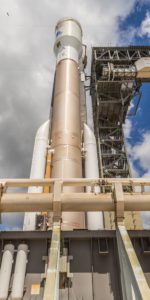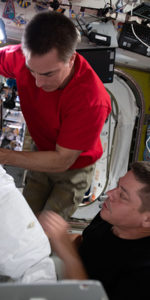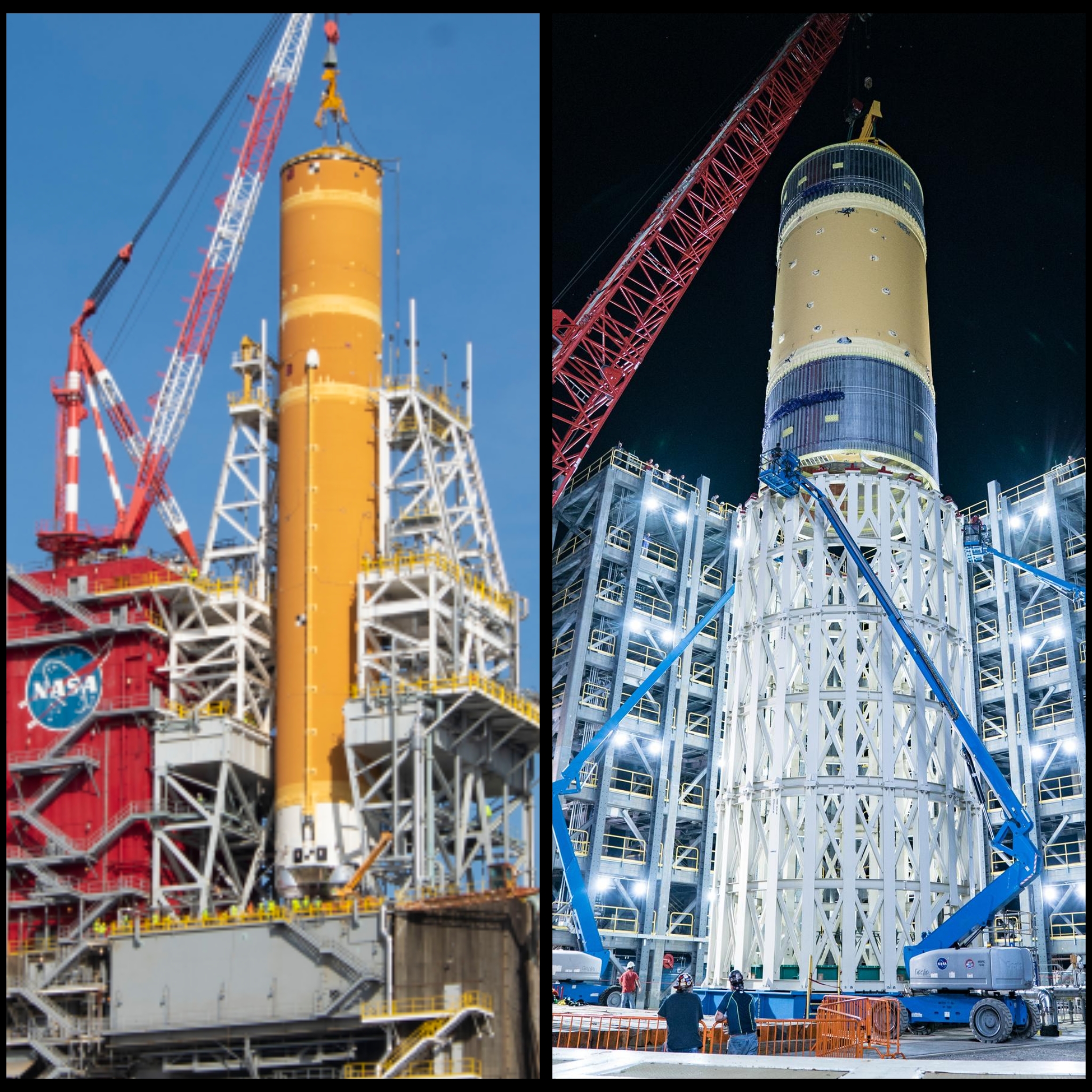
While a pandemic and social unrest have swept the nation, NASA is staying focused on their goal of returning America to the moon with the Artemis missions. Recently, the two solid rocket boosters for the agency’s giant Space Launch System (SLS) rocket were shipped to Kennedy Space Center in Florida, while engineers at Stennis Space Center in southern Mississippi continue putting the core stage through a series of ‘Green Run’ tests which will continue throughout the summer and culminate with a full-duration 8-minute test fire of the mammoth rocket later this year.
“Green Run is the step-by-step testing & analysis of the new SLS rocket core stage that will send astronauts to the Moon,” said Richard Sheppard, the SLS Stages Green Run Test Lead from NASA’s Marshall Space Flight Center in Huntsville, Alabama. “This testing will reduce risks for, not only the first flight, but also for the Artemis mission that will land astronauts on the Moon in 2024.”
Work with the rocket at Stennis began in January, but was temporarily suspended when Stennis went to Stage 4 on NASA’s ‘Agency Response Framework’ in response to a rise in COVID-19 cases across the region (Stennis is not far from New Orleans, which saw an explosion of COVID-19 this spring).
The ‘Green Run’ test campaign is actually a series of eight different tests, the first of which was completed before Stennis halted work due to the pandemic. Known as the modal test, teams used shakers to, “impart dynamic forces on the suspended stage to identify primary bending modes of the stage. Information from the modal test will help engineers verify vehicle models needed for the operation of the rocket’s guidance, navigation and control systems,” according to NASA.
Now, the booster is undergoing its second test series, which will test its avionics and three computers that control the giant rocket’s flight as it soars away from KSC pad 39B and into space with the Orion crew module. Engineers designed software similar to the flight software for Green Run, and a special stage controller will be used to simulate the Launch Control Center operations that will control the actual launch.
“The core stage avionics along with Green Run software have successfully completed tests in our test laboratories at Marshall,” said Lisa Espy, the core stage avionics lead at Marshall. “I am excited to see the flight systems come to life that will control the rocket as it sends the first Artemis mission to the Moon.”
Here is a summary from NASA of the eight tests for the 212-foot-tall SLS core stage that make up the ‘Green Run’ test campaign:
- Test 1- Modal Test: The first test in the Green Run series, a modal test was conducted in January. This test used shakers to impart dynamic forces on the suspended stage to identify primary bending modes of the stage. Information from the modal test will help engineers verify vehicle models needed for the operation of the rocket’s guidance, navigation and control systems.
- Test 2- Avionics: The rocket’s avionics, which are distributed throughout the stage, will be turned on and checkout out. This includes not only flight computers and electronics that control the rocket but also those that collect flight data and monitor the overall health of the core stage.
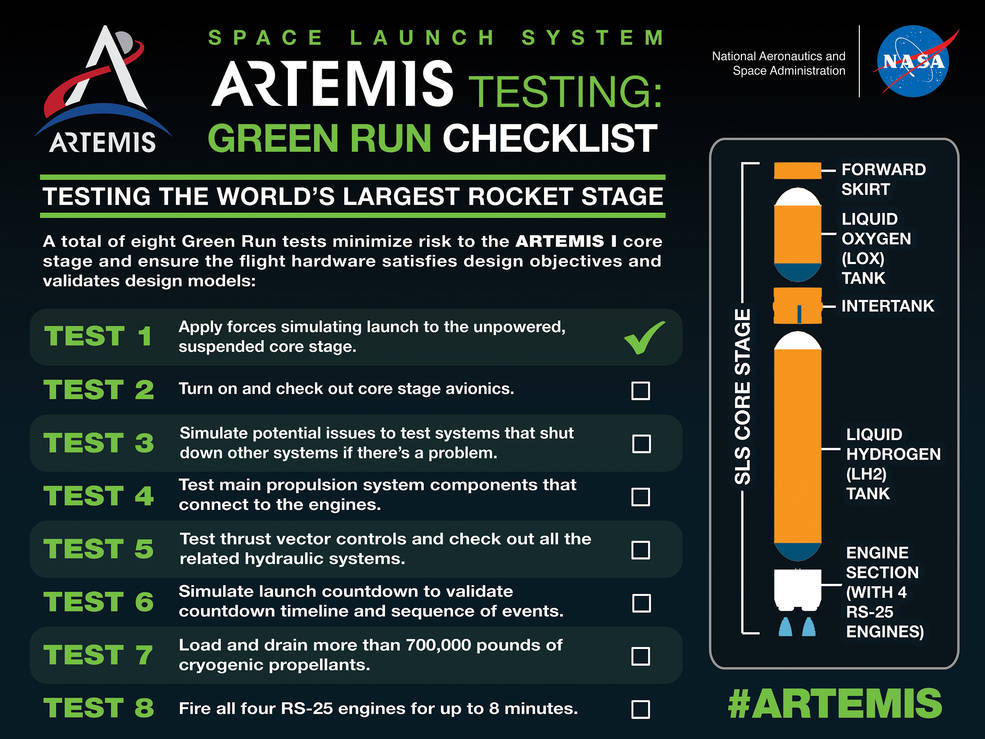
- Test 3- Fail-Safes: Engineers will check out all the safety systems that shut down operations during testing. To do this, they will simulate potential issues.
- Test 4- Propulsion: This will be the first test of each of the main propulsion system components that connect to the engines. Command and control operations will be verified, and the core stage will be checked for leaks in fluid or gas.
- Test 5- Thrust Vector Controls: Engineers will ensure that the thrust vector control system can move the four engines and check all the related hydraulic systems.
- Test 6- Countdown: This test simulates the launch countdown, including step-by-step fueling procedures. Core stage avionics are powered on, and propellant loading and pressurization are simulated. The test team will exercise and validate the countdown timeline and sequence of events.
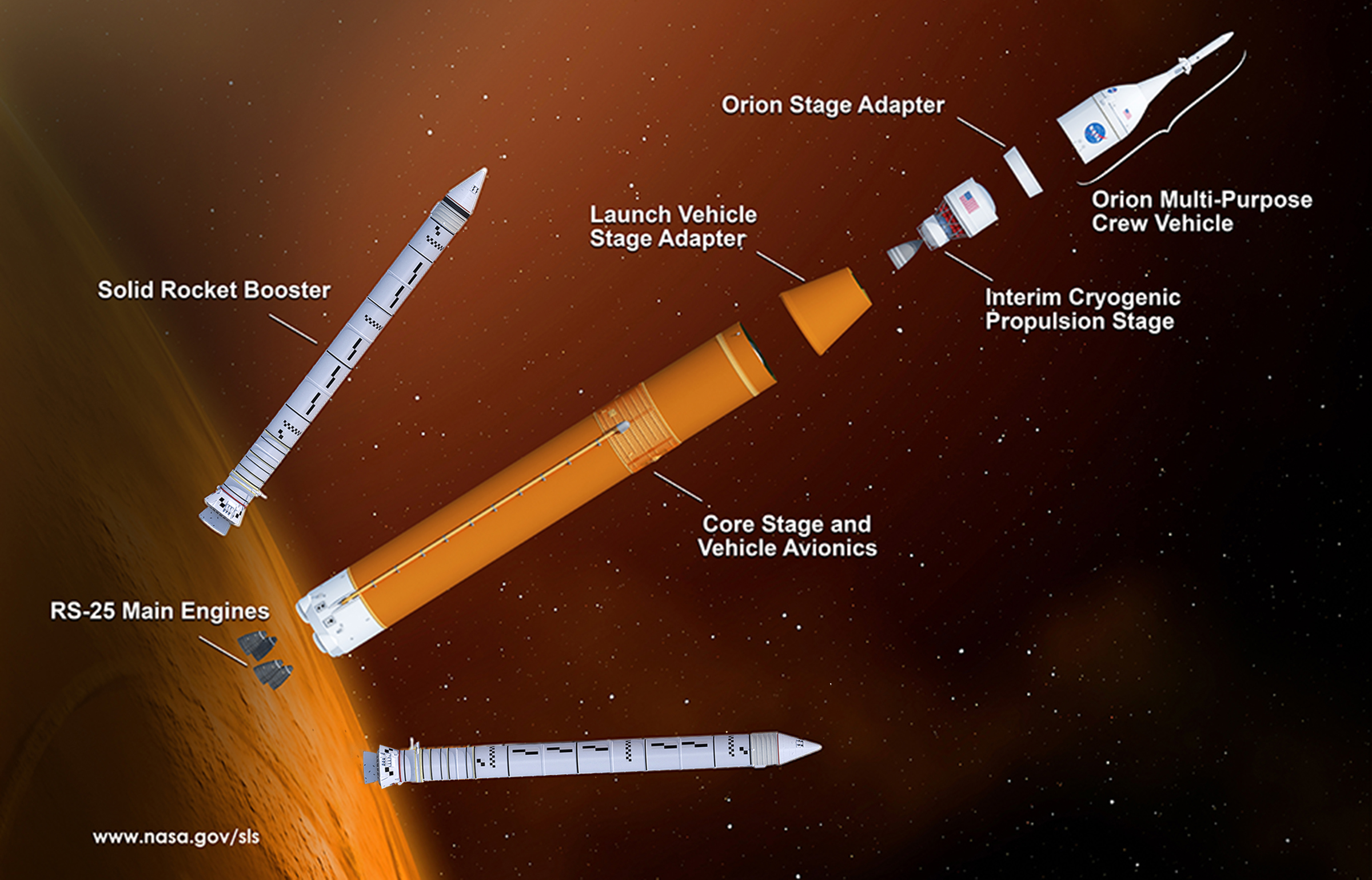
- Test Case 7- “Wet” Dress Rehearsal: Engineers will demonstrate loading, controlling and draining more than 700,000 gallons of cryogenic propellants into the two test stand run tanks and then returning the stage to a safe condition.
- Test Case 8- Hot Fire: The core stage’s four RS-25 engines will operated for up to 8 minutes, generating 1.6 million pounds of thrust, the amount of thrust the engines produce at sea level on the launch pad at liftoff.
SLS is the largest rocket stage NASA has ever produced, which will hold the cryogenic liquid hydrogen and liquid oxygen tanks that will feed its four RS-25 rocket engines. The ‘Green Run’ test campaign will help validate the core stage design and confirm that the hardware is ready to ship to KSC in Florida for flight.
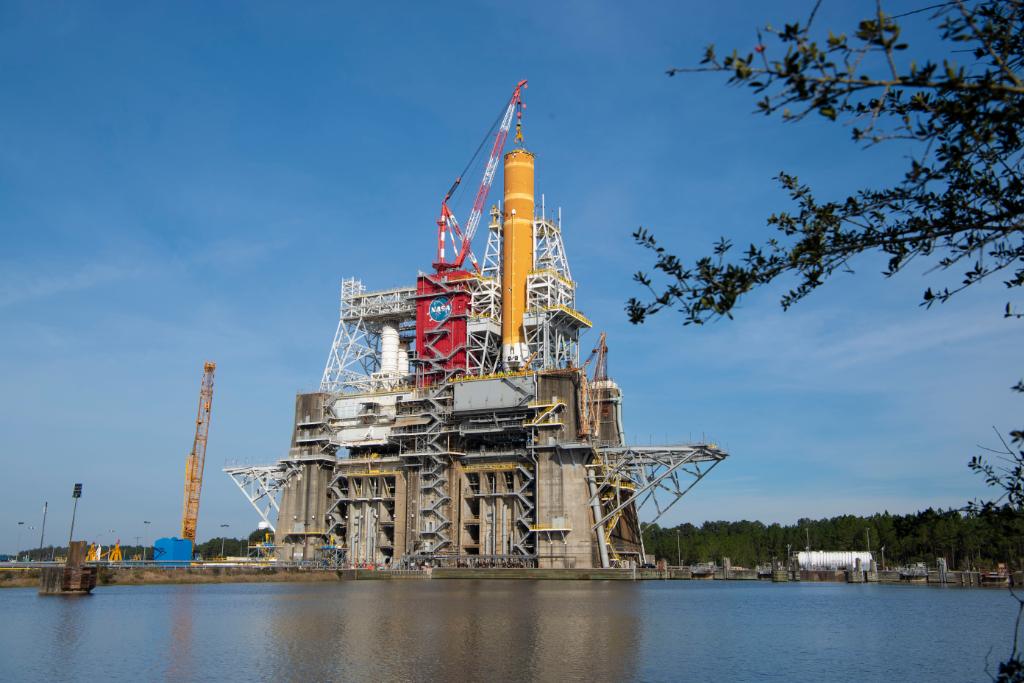
The next time it is fueled and the engines lit, will be when SLS launches Orion to the moon on the Artemis-1 mission.
Meanwhile, at Marshall Space Flight Center in Huntsville, Alabama, engineers are wrapping up a 3-year structural qualification test series with one upcoming final test that will push the design for the rocket’s liquid oxygen tank to its limits by intentionally trying to break it. Hydraulic systems will apply millions of pounds of force to push, pull and bend it to see just how much pressure the tank can take, simulating forces the tank will experience during launch and ascent. Except instead of being full of liquid oxygen propellant, it will instead be full of water.
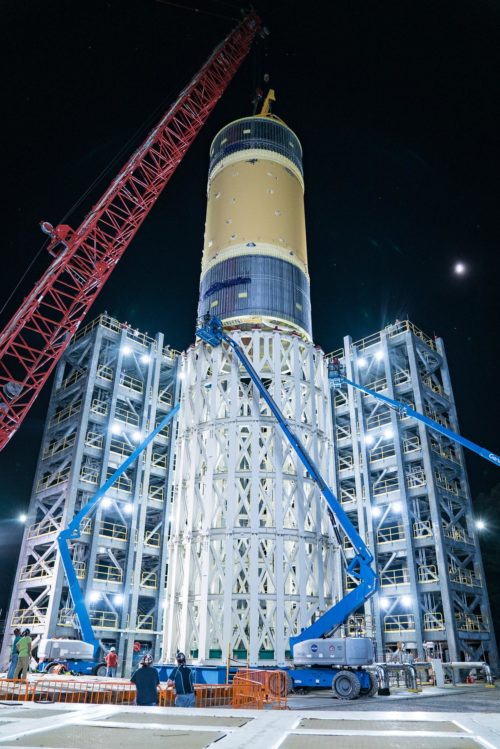
“We take rocket tanks to extreme limits and break them because pushing systems to the point of failure gives us data to help us build rockets more intelligently,” said Neil Otte, chief engineer for the SLS Stages Office at Marshall. “Breaking the propellant tank today on Earth will provide us with valuable data for safely and efficiently flying SLS on the Artemis missions to the Moon.”
“The tank is fitted with thousands of sensors to measure stress, pressure and temperature, while high-speed cameras and microphones capture every moment to identify buckling or cracking in the cylindrical tank wall,” says NASA. “This final test will apply controlled forces stronger than those engineers expect the tank to endure during flight.”
Structural testing has already been completed on three of the rocket’s largest core stage structures: the engine section, the intertank, and the liquid hydrogen tank.
“The liquid oxygen tests and the other tests to find the point of failure really put the hardware through the paces,” said April Potter, the SLS test project manager for liquid oxygen and liquid hydrogen structural tests. “NASA will now have the information to build upon our systems and push exploration farther than ever before.”
.
.
FOLLOW AmericaSpace on Facebook and Twitter!
.
.




